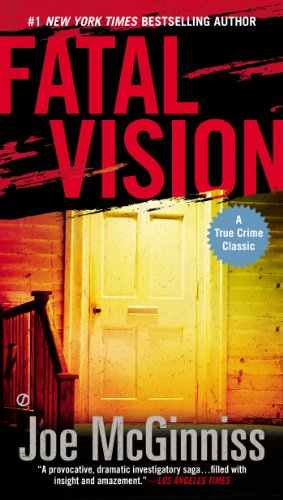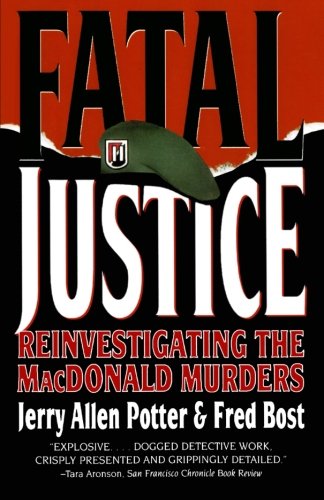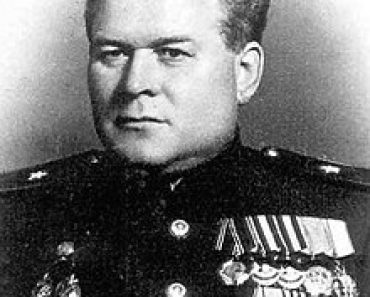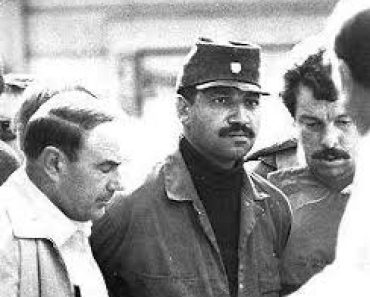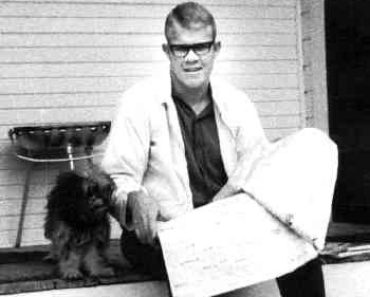 Jeffrey Robert MacDonald, M.D. was tried and convicted in 1979 for the February 1970 murders of his pregnant wife and two daughters.
Jeffrey Robert MacDonald, M.D. was tried and convicted in 1979 for the February 1970 murders of his pregnant wife and two daughters.
The Early Life of Jeffrey Robert MacDonald
Jeffrey Robert MacDonald was born on October 12, 1943 in Jamaica, New York. In Patchogue high school he was voted both “most popular” and “most likely to succeed”, and won a scholarship to Princeton University. While at Princeton, MacDonald resumed a romantic relationship with Colette Stevenson, whom he had dated while in high school. In the fall of 1963, upon learning of Colette’s pregnancy, the couple married. Their first child, Kimberley, was born in April, 1964.
After Jeffrey Robert MacDonald graduated from Princeton, he and his family moved to Chicago, IL where he attended Northwestern University Medical School. A second child, Kristen, was born in May of 1967.
The following year, upon his graduation from medical school, MacDonald completed an internship at the Columbia Presbyterian Medical Center in New York, NY. He then decided to join the Army and the entire family moved to Fort Bragg, NC. MacDonald was appointed to the Green Berets as a group surgeon in 1969.
The Murders
At 3:42 a.m. on the morning of February 17, 1970 dispatchers at Fort Bragg received an emergency call from Jeffrey Robert MacDonald, who reported a “stabbing.”
Responding officers arrived to find Colette, Kimberley, and Kristen all dead in their respective bedrooms. Jeffrey Robert MacDonald was found next to his wife, alive but wounded. He was immediately transferred to a nearby hospital.
Colette, who had been pregnant with her third child, was lying on the floor of her bedroom. She had been repeatedly clubbed, both her arms were broken, and she was stabbed thirty-seven times with a knife and ice pick.
Her husband’s torn pajama top was draped upon her chest.
On the headboard of the bed someone had written the word “pig” in blood.
The Children
Kimberley, then age five, was found in her bed.
She had been clubbed in the head and stabbed in the neck with a knife between eight and ten times.
Her younger sister Kristen, age two, was also found in her bed.
She had been stabbed with a knife thirty-three times and stabbed with an ice pick fifteen times.
Jeffrey Robert MacDonald’s wounds were much less severe than his family’s injuries. In addition to various cuts and bruises, he had what a staff surgeon referred to as a “clean, small, sharp” incision that caused one lung to partially collapse.
He was admitted to the hospital, where he was released after one week.
Jeffrey Robert MacDonald’s Story
MacDonald told investigators that on the evening of February 16, he had fallen asleep on the living room couch. He was later awakened by the sounds of Colette and Kimberley’s screams. As he rose to go to their aid he was attacked by three armed male intruders. A fourth intruder, described as a white female in a white floppy hat, stood nearby with a lighted candle and chanted “Acid is groovy, kill the pigs.” The three males attacked him with a club and ice pick.
During the struggle, MacDonald’s pajama top was pulled over his head and he used it to ward off thrusts from the ice pick. Eventually, MacDonald stated that he was overcome by his assailants and was knocked unconscious in the living room end of the hallway leading to the bedrooms.
Jeffrey Robert MacDonald Tried To Save Them
When he revived, Jeffrey Robert MacDonald stated that the house was silent and he could no longer hear the screams of his wife and older daughter. He went to his wife and tried to revive her, but found that she was already dead. He then covered Colette was his torn pajama top and went to check on his daughters. MacDonald told investigators of his attempts to resuscitate each child, but they were also beyond help. He also indicated that he stopped in the bathroom to check on his own wounds, washing his hands while in the bathroom. MacDonald then called the Operator asking for the Military Police and an ambulance.
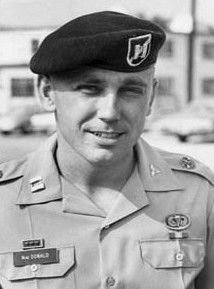 The Investigation
The Investigation
The army’s Criminal Investigation Division did not believe MacDonald’s version of events. As they studied the physical evidence, it did not seem to support the story told by Jeffrey Robert MacDonald. The living room, where MacDonald had supposedly fought for his life against three armed assailants, showed little sign of a struggle apart from an overturned coffee table and plant.
Fibers from MacDonald’s torn pajama top were not found in the living room, where he claimed that it was torn. Instead fibers from the pajama top were found under the body of Colette and in Kimberly’s and Kristen’s bedrooms. One fiber was found under Kristen’s fingernail.
The murder weapons were found outside the back door, all three were determined to come from the MacDonald house. The tips of surgical gloves were found beneath the headboard where “pig” was written in blood; they were identical in composition to a supply MacDonald kept in the kitchen.
The MacDonald family all had different blood types — a statistical anomaly that allowed C.I.D. agents to track what had happened in the apartment. Investigators theorized that the fight began in the master bedroom. Colette, they speculated, hit her husband in the forehead with a hairbrush.
Fighting For Their Lives
As Jeffrey Robert MacDonald retaliated by beating Colette with a piece of lumber, Kimberley, whose brain serum was found in the doorway, was struck, possibly by accident. Believing Colette dead, MacDonald carried the mortally wounded Kimberley back to her bedroom, with no choice but to finish the job.
After stabbing and bludgeoning her (Kimberley’s blood was discovered on the pajama top MacDonald said he hadn’t been wearing while in her room), he went to Kristen’s room, intent on disposing of the last remaining witness. Before he could do so, Colette, whose blood was found on Kristen’s bed covers and on one wall of the room, regained consciousness, stumbled in, and threw herself over her daughter.
After killing them, MacDonald wrapped his wife’s body in a sheet and carried it back to the master bedroom, leaving a footprint of Colette’s blood on the way out.
Jeffrey Robert MacDonald Tries To Cover His Crimes
C.I.D. investigators then theorized that MacDonald attempted to cover-up the murders, using articles on the Manson Family murders that he found in a issue of Esquire magazine in the living room. He then took a scalpel blade from a supply in the hallway closet and went to the adjacent bathroom and where he stabbed himself. Putting on surgical gloves from his supply, he went to the master bedroom, where he used Colette’s blood to write “pig” on the headboard.
Finally, he laid his pajama top over Colette and repeatedly stabbed her in the chest with an ice pick. MacDonald used the phones to summon an ambulance, discarded the weapons, and lay by the body of his wife while he waited for the military police to arrive.
On April 6, 1970, Army investigators interrogated Jeffrey Robert MacDonald. Less than a month later, on May 1, 1970, the Army formally charged MacDonald with the murder of his family.
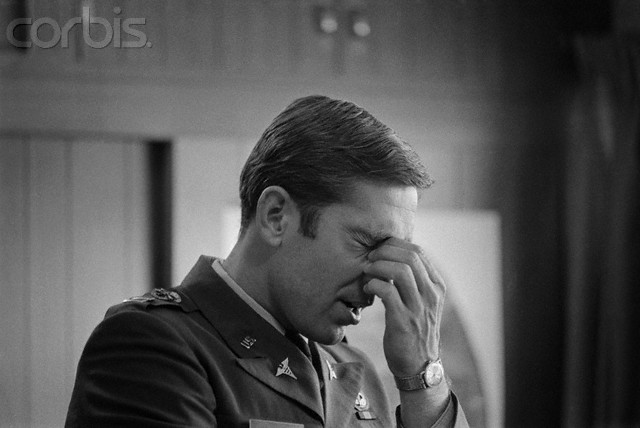
Article 32 Hearing
An initial army Article 32 hearing into Jeffrey MacDonald’s possible guilt, overseen by Colonel Warren Rock, convened in July 1970 and ran through September. MacDonald was represented by Bernard Segal, a civilian defense attorney from Philadelphia, PA. Segal mounted an effective defense of MacDonald which concentrated on the poor quality of the C.I.D investigation and the existence of other suspects, specifically Helena Stoeckley.
Segal presented evidence that the C.I.D. had not properly managed the crime scene and lost critical evidence, including skin found under Colette’s fingernails. In addition, he claimed to have located the woman that MacDonald had seen the night of the murders in his apartment. Her name was Helena Stoeckley, and she was a well-known drug user in the area. Witnesses claimed that Stoeckley had admitted involvement in the crimes and several remembered her wearing clothing similar to what Jeffrey Robert MacDonald had described.
In November 1970, Colonel Rock issued a report recommending that charges be dismissed against MacDonald because they were “not true”, and recommended that civilian authorities investigate Helena Stoeckley. However, the post Commanding Officer upon reviewing the Article 32 determined that there was “insufficient evidence” to proceed and dismissed the charges on those grounds.
MacDonald received an honorable discharge from the Army and returned to his home state of New York.
Jeffrey Robert MacDonald Acts Strangely
After the Article 32 hearing, Jeffrey Robert MacDonald returned to work as a doctor, briefly in New York and then in Long Beach, California, where he was an emergency room physician at the St. Mary Medical Center.
At this time Freddie Kassab, Colette’s stepfather, began to believe that MacDonald had killed his daughter and grandchildren. Initially, Kassab was one of MacDonald’s greatest supporters. At the Article 32 hearing he had said, “If I ever had another daughter, I’d still want the same son-in-law.”
After MacDonald was discharged from the Army his behavior began to raise the suspicions of his former father-in-law. MacDonald went on The Dick Cavett Show to talk about the murders and made several jokes about the investigation. Kassab also began to receive phone calls from MacDonald, who claimed that he and a group of friends had tracked down one of the killers and put him “six feet under.” After studying the Article 32 transcripts, Kassab became convinced of MacDonald’s guilt and began a successful campaign to have him brought to trial.
The Reports
On June 1, 1972 the CID submitted a report of some 3,000 pages naming Jeffrey Robert MacDonald as the chief suspect. The Justice Department had some 30 days to review the matter but did not decide whether or not to prosecute at that time.
Between 1972 and 1974 the case remained trapped within the Justice Department as they struggled over whether or not to prosecute. Finally in July 1974 a decision was made to prosecute and a grand jury was convened in August 1974. The decision to prosecute had largely come about due to the persistence of Freddie Kassab.
The Trial and Conviction
A grand jury in North Carolina indicted Jeffrey Robert MacDonald on 24 January 1975 and within the hour MacDonald was arrested in California. On 31 January 1975 he was freed on $100,000 bail pending disposition of the charges. On 29 July 1975, District Judge Franklin T. Dupree Jr. denied MacDonald’s double jeopardy and speedy trial arguments and allowed the trial date of August 18, 1975 to stand.
On August 15 1975, the Fourth Circuit Court of Appeals stayed the trial and on 23 January 1976, a panel of that court, in a 2-1 split, ordered the indictment dismissed on speedy trial grounds. An appeal on behalf of the Government led to an 8-0 reinstatement of the indictment by the U.S. Supreme Court on 1 May 1978. On 22 October 1978, the Fourth Circuit rejected MacDonald’s double jeopardy arguments and, on 19 March 1979, the U.S. Supreme Court refused to review that decision.
The trial lasted July 16-August 29, 1979 in a North Carolina courtroom. MacDonald was convicted of one count of first-degree murder in the death of Kristen and two counts of second-degree murder in the deaths of Colette and Kimberley. He was immediately given three life sentences, to be served consecutively.
Immediately after the verdict MacDonald applied for bail pending the outcome of his appeal. On September 7, 1979, this application was rejected and an appeal on bail was further rejected by the Fourth Circuit Court of Appeals on 20 November 1979.
Fatal Vision
In June, 1979 Jeffrey Robert MacDonald chose Joe McGinniss to write a book about the case. He was given unfettered access to MacDonald and the defense during the trial. MacDonald expected that the book would be about his innocence in the murders of his family. However, McGinniss’ book, Fatal Vision, portrayed MacDonald as a narcissistic sociopath who was indeed guilty of killing his family.
The book contains excerpts from court transcripts and sections entitled, “The Voice of Jeffrey MacDonald”, which were based on tape recordings made by MacDonald following his conviction.
MacDonald subsequently sued McGinniss in 1987 for fraud based on the fact that McGinniss pretended to believe MacDonald innocent after he came to the conclusion that Jeffrey Robert MacDonald was guilty, in order to continue MacDonald’s cooperation with him. After a trial, which resulted in a mistrial, McGinniss and MacDonald settled out of court for $325,000.
The Appeals
On July 29, 1980, a panel of the Fourth Circuit Court of Appeals reversed MacDonald’s conviction in a 2-1 split on the grounds that the delay in bringing him to trial violated his Sixth Amendment rights to a speedy trial. On August 22, 1980, MacDonald was freed on $100,000 bail. He returned to work at St. Mary’s Medical Center in Long Beach, California as the Director of Emergency Medicine. His job had been held open during the year he was incarcerated.
On December 18, 1980, the Fourth Circuit Court split 5-5 to hear the case en banc and thus the earlier decision stood. On May 26, 1981, the United States Supreme Court accepted the case for consideration and on December 7, 1981, heard oral arguments.
On March 31, 1982, they ruled 6-3 that MacDonald’s rights to a speedy trial were not violated. Jeffrey Robert MacDonald was rearrested and returned to prison. Defense lawyers filed a new motion for MacDonald to be freed on bail pending appeal, but the Fourth Circuit refused. MacDonald’s remaining points of appeal were heard on June 9, 1982 and his convictions were unanimously affirmed on August 16, 1982. A further appeal to the U.S. Supreme Court was refused on January 10, 1983.
Psychologically Incapable
On March 1, 1985, Judge Dupree rejected all defense motions for a new trial. Lawyers for MacDonald appealed to the Fourth Circuit Court of Appeals, which upheld Dupree’s ruling and refused to reopen the case. On October 6, 1986 the Supreme Court upheld the lower court’s decision.
The courts ruled that Judge Dupree had acted correctly when he refused to let the jury see a transcript of the Article 32 military hearing, and, because this was not an insanity trial, had also acted properly in not allowing the jurors to hear any of the psychiatric testimony. Had he done so, the jurors would have learned that none of the doctors hired by the defense or who worked for the Army or government at Walter Reed Hospital, concluded that MacDonald was psychologically incapable of committing the murders.
The courts have also ruled that the confessions of Helena Stoeckley were unreliable and at odds with the established facts of the case, and that her treatment at trial was correct. During trial, she was arrested under a material witness warrant and testified before the jury that she could not remember her activities on the evening of the murders due to substantial drug use; witnesses to whom she had confessed were not allowed to testify.
Oh What A Tangled Web
Jeffrey Robert MacDonald was granted leave to file his fourth appeal on January 12, 2006. This latest appeal is based on the recent sworn affidavit of Jimmy Britt, a decorated retired United States Marshal who worked as such during the trial. Britt states that he heard the material witness in the case, Helena Stoeckley, admit to the prosecutor of the case, James Blackburn, that she was present at the MacDonald residence at the time of the murders and that Blackburn threatened her with prosecution if she testified.
Stoeckley, however, met with counsel for the defense prior to this alleged meeting with Blackburn, and she told them that she had no memory of her whereabouts the night of the murders.
Defense Attorney Wade Smith advised Judge Dupree that Helena had testified on the stand essentially the same as she had stated in the Defense interviews. Also, important to note that there is record of Helena contacting Judge Dupree to claim she was terrified, not of the prosectors, but of Bernie Segal the lead defense attorney.
On April 16, 2007, MacDonald’s attorneys filed an affidavit of Stoeckley’s mother, in which she states that her daughter confessed to her twice that she was at the MacDonald residence on the evening of the murders and that she was afraid of the prosecutors. Mrs. Stoeckley’s past statements concerning her daughter are at odds with the details contained in her affidavit.

Image by © Bettmann/CORBIS
Suppressed Evidence
MacDonald supporters claim that the prosecution suppressed evidence in this case. In the years since the trial defense lawyers have used the Freedom of Information Act to find evidence that the government did not present at trial.
Unidentified fingerprints and fibers found in the apartment were never matched to anyone known to have been in the house prior or after the murders. However, fingerprint exemplars of the children were not obtained and Colette’s fingerprint exemplars were of poor quality, as they were taken subsequent to embalming.
Two unidentified 22″ long synthetic hairs were found, but not pointed out specifically to the defense. MacDonald’s lawyers claim that these hairs were from the wig worn by Helena Stoeckley, but the government contends they more likely came from the children’s dolls.
Unreported Evidence
In addition, the hairs differed from each other in composition and were found in a hairbrush, which points to the unlikely scenario that an intruder brushed their hair at the scene and was wearing more than one wig. A spot of blood that was either type O or type B (MacDonald’s blood type) was found in the hallway.
MacDonald supporters continue to insist that this was not disclosed to the defense, despite the existence of the trial transcripts online which clearly show this spot was indeed disclosed and discussed. Supporters of MacDonald also point to black wool fibers found on Colette MacDonald’s mouth and shoulder as evidence of intruders that the government deliberately did not report.
In 1995, two MacDonald supporters, Jerry Allen Potter and Fred Bost, wrote Fatal Justice, a book meant to both refute Joe McGinniss’ Fatal Vision and present the evidence they claimed had been hidden by government prosecutors.
DNA Testing
Lawyers representing MacDonald were given the right to pursue DNA tests on limited hair evidence in 1997 by the Fourth Circuit Court of Appeals. After 8 years, the tests on some 15 exhibits were completed.
DNA test results released March 10, 2006, did not match Helena Stoeckley’s nor her boyfriend, Greg Mitchell’s DNA. A limb hair found stuck to the bloody left palm of Colette MacDonald’s matched the DNA profile of Jeffrey MacDonald. A hair found in Colette’s bloody right palm was sourced as her own hair. MacDonald’s DNA profile also matched body hairs found on the multi-colored bedspread from the master bed where he generally slept and on the top sheet of Kristen MacDonald’s bed where he tried to resucitate her.
An unsourced pubic hair was found between Colette’s legs, as well as another unsourced hair in a bedsheet, and an unsourced hair, with root intact was found under the fingernail of 2 year old Kristen. A judicial response to the DNA results is pending.
Parole
Jeffrey Robert MacDonald is currently imprisoned in Cumberland, Maryland at a Federal prison. He has steadfastly maintained his innocence throughout the years. At the urging of his wife and attorneys, he had a parole hearing on May 10, 2005. Parole was denied, with the recommendation that 15 more years be served before another parole hearing, or two years if new circumstances were to arise in the meantime.
credit murderpedia























































